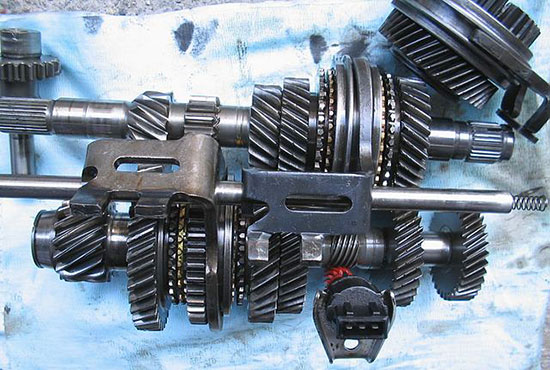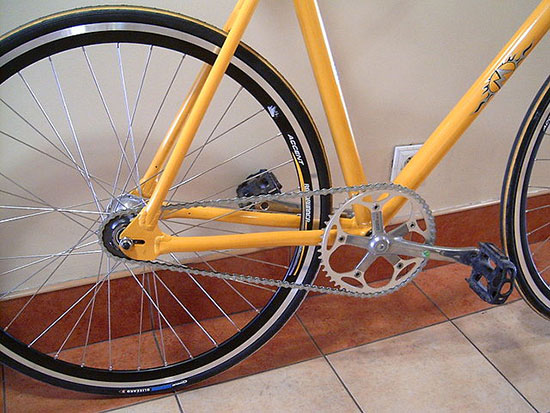Gearing Up
by Andrew Boyd
Today, we change gears. The University of Houston's College of Engineering presents this series about the machines that make our civilization run, and the people whose ingenuity created them.
Whether you drive a stick shift or an automatic, you know about gears. Low gears get you going without killing the engine, and high gears allow your car to cruise without the engine blowing up. But the automotive world is gearing up for a sizable makeover.
Let's start by looking at how gears work, and to do that, let's look at a one speed bicycle. It has two important gears. One's attached to the pedals. The other's attached to the back wheel. They're connected by a chain. Physics tells us that the resistance we feel when we push on the pedals depends on the relative size of the two gears. If the pedal gear is small relative to the wheel gear, it's very easy to pedal — you're in low gear. When you make the pedal gear larger or the wheel gear smaller, it seems harder to pedal. Multispeed bicycles work by allowing the rider to manually adjust the relative size of the two gears. The relative size is known as the gear ratio.

A new gear on the rear hub gear drive on a Mountain bike. [Wikipedia/Bidgee]
Most cars work the same way. When you shift gears, or your car shifts for you, it's changing the relative size of the gear connected to the engine and the gear connected to the wheel.

H 5-speed gearbox + reverse, the 1600 Volkswagen Golf 4th series, with the car speed sensor, but with a wheel / selector decoupled, and the third gear of the reverse unpaired. [Wikipedia/A7N8X]
As we know from riding bicycles, there's a gear that feels best depending on the incline of the road, how fast we're going, and so on. Similarly for cars, there's a most efficient gear for every driving condition. But here's the problem. If your car has four gears, it can only choose from four different gear ratios. If it had 10 or 20 or more gears it could operate more efficiently. But imagine how complicated a car with that many gears would be.
Enter the continuously variable transmission, or CVT for short. CVTs are designed to emulate an infinite number of gears. That way a car can choose exactly the right gear ratio for every condition. The idea's not new. Leonardo da Vinci sketched out a motor using a CVT some five hundred years ago, and CVTs have been used in some cars since the mid twentieth century. But they've really made their presence felt in just the last few decades.
_02.jpg)
Toyota electronic continuously variable transmission (e-CVT), photographed at the 2010 Australian International Motor Show, Darling Harbour, New South Wales, Australia. [Wikipedia/OSX]
A good part of the reason is simply a long chain of incremental engineering improvements. Today's CVTs are reliable, economical, and provide better fuel efficiency than their fixed gear-set predecessors. They can also provide better acceleration. So why haven't they been more widely adopted?
For one thing, car makers have a long history with fixed gear-set transmissions. The introduction of CVTs requires changes for both manufacturers and mechanics. But perhaps more importantly, cars with CVTs don't sound like cars with fixed gear-sets. We don't hear the engine revving as we accelerate through one gear and shift into the next. Instead, the sound and feel during acceleration is smooth and uniform. Driving a CVT feels a lot like driving an electric golf cart. It doesn't evoke a sense of power. That's something we've come to expect in our cars. Sometimes it's more difficult for the human to change gears than it is for the machine.
I'm Andy Boyd at the University of Houston, where we're interested in the way inventive minds work.
(Theme music)
Notes and references:
W. Harris. How CVTs Work. From the How Stuff Works website: http://auto.howstuffworks.com/cvt.htm. Accessed January 14, 2014.
M. Brain. How Manual Transmissions Work. From the How Stuff Works website: http://auto.howstuffworks.com/transmission1.htm. Accessed January 14, 2014.
This episode first aired on January 16, 2014.

